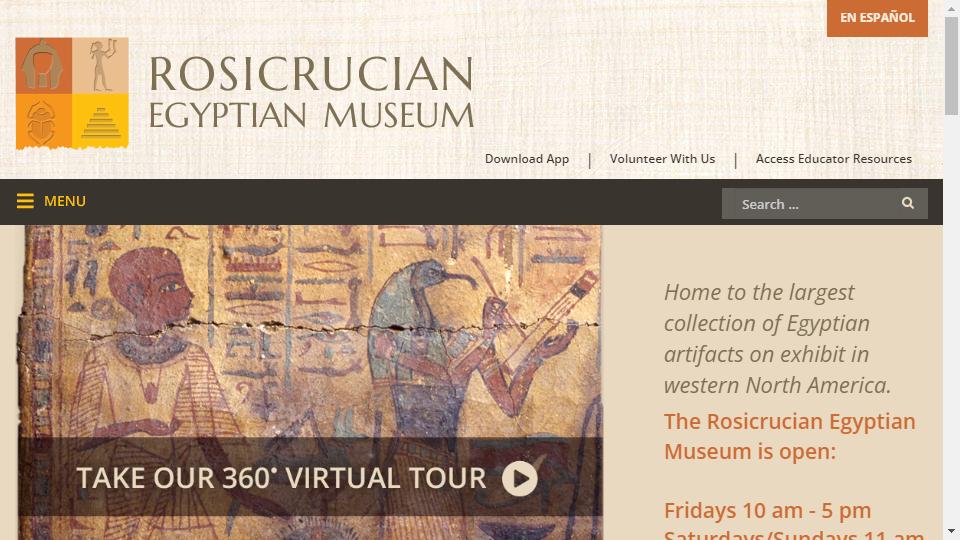

Egyptian Museum) is a seat in Egypt's capital city of Cairo, Liberation Square, the ancient Egyptian civilization's relics treasure trove, the collection of ancient Egyptian relics about 120,000 pieces, including a large number of Egyptian archaeological discoveries in the essence of cultural relics, is one of the world's largest collection of ancient Egyptian relics museum.
The Egyptian Museum is also the world's largest collection of pharaonic relics 1835 was hosted by the Egyptian government in Ezbekeyah Garden next to the establishment of a museum for the collection of ancient Egyptian artifacts, later moved to Cairo Castle. However, in 1855, Egyptian government officials gave the entire collection of artifacts to the Austrian Grand Duke Maximilian, which is now in the Kunsthistorisches Museum, Vienna.
In 1858, a new museum was established in the Burak region, north of Cairo. Immediately after, the famous French archaeologist Auguste Mariette (Auguste Mariette) under the auspices of the establishment of the new Department of Antiquities, Mariette is also known as the "father of the Egyptian Museum. The new museum building is located on the banks of the Nile, used as a warehouse, a flood of the Nile in 1878, the museum suffered great damage. 1892, the collection was transferred to the former royal palace in the Giza district of Cairo, and finally in 1902 was placed in the new Cairo Museum now located in Tahrir Square.
The Egyptian Museum is a brick and red stone building in the neoclassical style, designed and built in 1896 by the French architect Marcel Dourgnon. The interior of the building has a large and spacious atrium, lit by diffused glass in the ceiling and windows on the second floor, in which huge statues of gods are placed, as in the ancient Egyptian temples. The rest of the exhibition hall is divided into two levels, one chronologically arranged, with artifacts from the ancient kingdom period to the Roman reign of the 5th and 6th centuries AD, including a large collection of ancient sedge paper and coins that have decayed over thousands of years and are mostly in pieces, with fragments of sedge paper found in a variety of languages, including Greek, Latin, Roman, Arabic and ancient Egyptian. The fragments were found in a variety of languages, including Greek, Latin, Roman, Arabic and ancient Egyptian. The coins come in a variety of materials, including gold, silver and bronze. These coins come not only from ancient Egypt, but also from ancient Greece, Rome, and the Islamic region. These historical materials will help historians to study the trade of ancient Egypt. In addition, the first floor also displays artifacts from the New Kingdom period, which spans from about 1550-1069 B.C. There are many large artifacts from this period, including statues, tables, sarcophagi, sarcophagi and relief walls.
On the second floor is the thematic exhibition room, displaying artifacts from the last two Egyptian dynasties, many from the pharaohs Thutmosis III, Thutmosis IV, Amenophis II. The tombs of Queen Hatshepsut and the courtier Maiherpri were also excavated from the Valley of the Emperors, most notably from the well-preserved tombs of Tutankhamun and Psusennes II. The gold masks, the gold human coffin, and the gold throne in Tutankhamun's exhibition room are among the treasures of the Egyptian Museum. In addition, there are two special mummy display rooms for the mummies of the kings and consorts of the New Kingdom, the most well-preserved of which is the mummy of Pharaoh Ramses II of the 19th Dynasty.
The Egyptian Museum also contains world-renowned artifacts such as the Narmeh Tablet, a statue of a scribe from the ancient kingdom period, and a painted seated statue of Prince Rahot and his consort, which document the first dynasty of ancient Egypt.

Links : poudr.xyz
This site is free of charge to add web sites. If you are interested, you are welcome to contribute! Contact Email:[email protected] ‖ Contact
Copyright © 2018-2025 en.sitegaga.com All Rights Reserved.